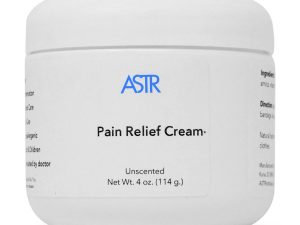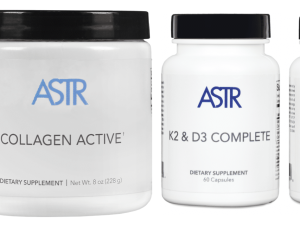7 health Benefits of Cannabidiol (CBD) & How Does Cannabidiol CBD Work?
7 health Benefits of Cannabidiol (CBD) & How Does Cannabidiol CBD Work?
Cannabidiol is commonly known as CBD. It is used widely for medical purposes due to its famous health benefits. Topical application of CBD or inhaling CBD through smoke can help maintain your body at homeostasis. Let us see why CBD is so popular?
Medical marijuana’s most common cannabinoid is CBD. This component can either be manufactured in laboratories or is derived straight from the hemp plant. The hemp plant is a similar breed to the cannabis Sativa plant. Marijuana’s two main components are THC and CBD. Where tetrahydrocannabinol (THC) is known for causing a “high”, CBD does not have that kind of implications in mind. Cannabidiol has several health benefits, and it is therefore gaining popularity in the medical world. In this article, we will be discussing 7 researched health benefits of CBD.
How does Cannabidiol CBD work?
Our body has a dedicated system known as the endocannabinoid system (ECS), through which our body manages to stay in homeostasis. Our body produces endocannabinoids that are densely packed in all the cells and tissues throughout our body.
Endocannabinoids are neurotransmitters that attach themselves to the cannabinoid receptors in our body. The receptors also exist throughout our body’s central and peripheral nervous systems. If a system of the body is not functioning well, the neurotransmitters work precisely and send signals between nerve cells. This process helps to bring that particular system back to normal.
Once the endocannabinoids are finished with their job, the enzymes in the body break down those endocannabinoids. This way the ECS manages to regulate the proper functioning of systems in the body, such as sleep, appetite, motor control, alertness, etc. (1)
Once CBD gets into the body, it binds with the cannabinoid receptors present in our body, just like endocannabinoids, and gives immediate feedback to regulate the proper functioning of systems.
1. Pain Relief
For centuries, cannabis plants have been well known for being used to treat pain. There are 100s of components in marijuana. According to research, several components of marijuana help in relieving pain, and CBD is one of them. (2)
According to studies, CBD interconnects with neurotransmitters and reduces inflammation, hence it helps in lowering chronic pain by affecting neurotransmitters. (3)
According to another research, CBD was found to have a positive impact on pain relief when it was ingested in rats. The treatment remarkably minimized inflammation and nerve pain in rats. (4)
An oral spray that is made by the combination of both the main components of cannabis, i.e. THC and CBD, is legal in several countries to treat pain related to arthritis and multiple sclerosis. The spray is called Sativex. According to one study, effects of Sativex were examined on 47 people, and the population of the study experienced an improvement in muscle spasms, walking, and pain. (6)
According to another study, The oral spray Sativex showed an improvement in the quality of sleep, and in pain during movement and rest, in people with rheumatoid arthritis. (7)
2. Anxiety and Depression
Most of us are victims of anxiety and depression nowadays. Depression and anxiety are common mental disorders, which can have catastrophic effects on our health. These mental disorders are usually treated using pharmaceutical medicines. These medicines might be additive, such as benzodiazepines, and therefore, the affectees may be subject to substance abuse. In addition, these medications can have side effects as well, such as drowsiness, insomnia, headache, agitation, and sexual dysfunction. (8) (9)
CBD is a natural and safe option to treat anxiety and depression, and in many cases, it has shown a positive result. CBD can take action on the brain’s receptors for a neurotransmitter called serotonin, which regulates mood and social behavior.
The effect of taking oral CBD or placebo was investigated in one Brazilian study, where 57 people were given a placebo or CBD 90 minutes before they experienced an artificial public speaking test. The research identified that after taking a 300-mg dose of CBD, anxiety was significantly reduced. However, the placebo had very little or no effect at all on anxiety. (10) (10)(10)
Children with PTSD, having insomnia and anxiety, were also treated safely using CBD oil.
3. Treat Opioid Addiction
People who are dependent on opioids can be treated using CBD. There are both human clinical and preclinical animal trials to support this.
According to a study, CBD has the potential to help with heroin use disorder. It reduces cue-induced cravings and anxiety of heroin users, without any harmful side effects. (11)
According to another study, CBD can help patients who have an opioid addiction. It can reduce mental disorders and medical symptoms in patients with substance use disorders, such as pain, anxiety, and insomnia. (12)
4. Cancer-related symptoms
In one study, the results of combined intake of CBD and THC were investigated in patients with cancer-related pain, who did not get relief from pharmaceutical medicines. The study analyzed that an extract with both cannabinoids was more beneficial for reducing pain, than with THC alone. (13)
The most common side effects of chemotherapy are nausea and vomiting. CBD can help reduce chemotherapy-induced symptoms. (14)
5. Heart Health
Research has also linked cannabidiol with several heart benefits, and benefits related to the circulatory system, including CBD’s ability to reduce blood pressure.
CBD has stress-reducing, and antioxidant properties, so it can reduce cell death and inflammation that is related to heart disease. According to research on mice with heart disease, CBD reduces oxidative stress and stops heart damage. (15)
6. Arthritis
CBD is also known to improve symptoms of different types of arthritis.
A study in 2006 compared CBD-based drug – Sativex – with placebo, and study showed that Sativex improved sleep quality and pain in rheumatoid arthritis cases, compared to placebo. (7)
7. Diabetes
According to research, CBD can be used as a natural treatment in cases of high blood sugar levels, and it can regulate hormone levels related to insulin.
In a small study of 13 people, who had type 2 diabetes, Cannabidiol increased the degree of glucose-dependent insulinotropic peptide and reduced the resistance to insulin in patients that were not on insulin treatment. (16)
Several health issues can be treated using cannabidiol, and it is vastly being used for medical purposes. In addition to the issues outlined above, CBD can be used against neurological disease, for PTSD symptoms, epilepsy syndromes, for reducing acne, etc.
Adding Omega 3 fatty acids to CBD can help make the CBD supplements more effective, and therefore, Hemp Active Phytocannabinoids & Omega can be effective for the proper functioning of your endocannabinoid system.
References
1. Mouslech Z, Valla V. Endocannabinoid system: An overview of its potential in current medical practice. Neuro Endocrinol Lett [Internet]. 2009 [cited 2021 Nov 23];30(2). Available from: https://pubmed.ncbi.nlm.nih.gov/19675519/
3. Website [Internet]. Available from: https://www.ncbi.nlm.nih.gov/pmc/articles/PMC5922297/
4. Genaro K, Fabris D, Arantes ALF, Zuardi AW, Crippa JAS, Prado WA. Cannabidiol Is a Potential Therapeutic for the Affective-Motivational Dimension of Incision Pain in Rats. Front Pharmacol [Internet]. 2017 [cited 2021 Nov 23];8. Available from: https://www.ncbi.nlm.nih.gov/pmc/articles/PMC5478794/
5. Costa B, Trovato AE, Comelli F, Giagnoni G, Colleoni M. The non-psychoactive cannabis constituent cannabidiol is an orally effective therapeutic agent in rat chronic inflammatory and neuropathic pain. Eur J Pharmacol [Internet]. 2007 Feb 5 [cited 2021 Nov 23];556(1-3). Available from: https://pubmed.ncbi.nlm.nih.gov/17157290/
6. Russo M, Calabrò RS, Naro A, Sessa E, Rifici C, D’Aleo G, et al. Sativex in the management of multiple sclerosis-related spasticity: role of the corticospinal modulation. Neural Plast [Internet]. 2015 [cited 2021 Nov 23];2015. Available from: https://pubmed.ncbi.nlm.nih.gov/25699191/
7. Blake DR, Robson P, Ho M, Jubb RW, McCabe CS. Preliminary assessment of the efficacy, tolerability and safety of a cannabis-based medicine (Sativex) in the treatment of pain caused by rheumatoid arthritis. Rheumatology [Internet]. 2006 Jan [cited 2021 Nov 23];45(1). Available from: https://pubmed.ncbi.nlm.nih.gov/16282192/
10. Linares IM, Zuardi AW, Pereira LC, Queiroz RH, Mechoulam R, Guimarães FS, et al. Cannabidiol presents an inverted U-shaped dose-response curve in a simulated public speaking test. Rev Bras Psiquiatr [Internet]. 2019 [cited 2021 Nov 23];41(1). Available from: https://pubmed.ncbi.nlm.nih.gov/30328956/
11. Hurd YL, Spriggs S, Alishayev J, Winkel G, Gurgov K, Kudrich C, et al. Cannabidiol for the Reduction of Cue-Induced Craving and Anxiety in Drug-Abstinent Individuals With Heroin Use Disorder: A Double-Blind Randomized Placebo-Controlled Trial. Am J Psychiatry [Internet]. 2019 Nov 1 [cited 2021 Nov 23];176(11). Available from: https://pubmed.ncbi.nlm.nih.gov/31109198/
12. Hurd YL, Yoon M, Manini AF, Hernandez S, Olmedo R, Ostman M, et al. Early Phase in the Development of Cannabidiol as a Treatment for Addiction: Opioid Relapse Takes Initial Center Stage. Neurotherapeutics [Internet]. 2015 Oct [cited 2021 Nov 23];12(4). Available from: https://pubmed.ncbi.nlm.nih.gov/26269227/
13. Johnson JR, Burnell-Nugent M, Lossignol D, Ganae-Motan ED, Potts R, Fallon MT. Multicenter, double-blind, randomized, placebo-controlled, parallel-group study of the efficacy, safety, and tolerability of THC:CBD extract and THC extract in patients with intractable cancer-related pain. J Pain Symptom Manage [Internet]. 2010 Feb [cited 2021 Nov 23];39(2). Available from: https://pubmed.ncbi.nlm.nih.gov/19896326/
14. Bloechl-Daum B, Deuson RR, Mavros P, Hansen M, Herrstedt J. Delayed nausea and vomiting continue to reduce patients’ quality of life after highly and moderately emetogenic chemotherapy despite antiemetic treatment. J Clin Oncol [Internet]. 2006 Sep 20 [cited 2021 Nov 23];24(27). Available from: https://pubmed.ncbi.nlm.nih.gov/16983116/
16. Website [Internet]. Available from: https://clinicaltrials.gov/ct2/show/NCT01217112
-
Pain Relief Cream
$49.00 – $299.00Price range: $49.00 through $299.00 Select options This product has multiple variants. The options may be chosen on the product page -
-
Chronic Fatigue Kit
$299.00Original price was: $299.00.$249.00Current price is: $249.00. Add to cart -
Severe Inflammation Relief Kit
$279.00Original price was: $279.00.$229.00Current price is: $229.00. Select options





